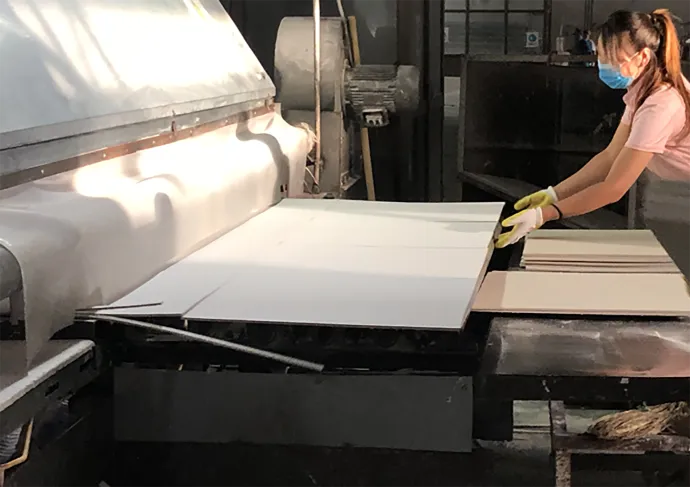Nov . 22, 2024 05:42 Back to list
insulated ceiling hatch
The Importance of Insulated Ceiling Hatches in Energy Efficiency and Comfort
In modern building design and construction, energy efficiency is becoming increasingly paramount. Building owners and architects are continually seeking ways to minimize energy consumption while maximizing comfort. One often-overlooked component that plays a significant role in this pursuit is the insulated ceiling hatch. This article delves into the benefits, types, and installation considerations of insulated ceiling hatches, illustrating their importance in both residential and commercial settings.
What is an Insulated Ceiling Hatch?
An insulated ceiling hatch is a door-like structure installed in the ceiling, providing access to areas such as attics, roofs, or ductwork. These hatches are specifically designed to be energy-efficient, featuring thermal insulation properties that help maintain desired indoor temperatures. By minimizing heat loss or gain through ceiling access points, these hatches contribute significantly to overall energy savings.
Benefits of Insulated Ceiling Hatches
1. Energy Efficiency The primary advantage of insulated ceiling hatches is their ability to reduce energy consumption. Traditional ceiling hatches can be a significant source of thermal bridging, leading to uncomfortable drafts and increased heating or cooling costs. Insulated hatches effectively seal off these openings, maintaining the integrity of the building envelope.
2. Comfort and Climate Control By minimizing the transfer of heat, insulated ceiling hatches help maintain consistent indoor temperatures. This not only enhances comfort for occupants but also reduces the strain on HVAC systems. As a result, buildings equipped with insulated hatches can experience improved climate control, leading to a more pleasant living or working environment.
3. Noise Reduction In addition to thermal insulation, many insulated ceiling hatches also provide soundproofing benefits. This can be particularly valuable in multi-family housing or commercial settings where noise transfer between spaces can be disruptive. The added insulation serves to dampen sound transmission, contributing to quieter interiors.
4. Compliance with Building Codes With an increasing number of building codes focusing on energy efficiency, incorporating insulated ceiling hatches can help architects and builders meet these requirements. This not only facilitates compliance but can also enhance the building’s marketability.
Types of Insulated Ceiling Hatches
Insulated ceiling hatches come in various styles and materials, catering to different needs and applications. Common types include
insulated ceiling hatch

- Drop-Down Hatches These hatches are hinged and can be easily opened downward, providing convenient access to attic spaces or mechanical systems. They often come with insulation built into the door to enhance thermal performance.
- Flush-Mount Hatches Designed to sit flush with the ceiling, these hatches offer a seamless appearance while still providing necessary access. They are typically used in areas where aesthetics are a priority.
- Fire-Rated Hatches In commercial settings, where fire safety is a concern, insulated ceiling hatches can be designed to meet specific fire-rated standards. These hatches are constructed to resist the passage of fire and smoke, ensuring safety during emergencies.
Installation Considerations
When installing an insulated ceiling hatch, several factors should be considered
1. Location The hatch should be strategically placed to provide easy access while minimizing the impact on ceiling aesthetics and function.
2. Insulation Value Selecting a hatch with an appropriate insulation rating (R-value) is essential. Higher R-values indicate better thermal resistance, offering improved energy savings.
3. Seal Integrity Ensure that the hatch has a tight seal when closed. Weather stripping and gaskets can enhance the seal, preventing air leaks.
4. Compliance Verify that the hatch meets local building codes and standards. Consulting with professionals can ensure that all requirements are met during installation.
In conclusion, insulated ceiling hatches are a vital component of energy-efficient building design. By reducing energy loss, enhancing occupant comfort, and complying with building codes, these hatches offer numerous benefits for both residential and commercial applications. As architects, builders, and property owners continue to prioritize sustainability, insulated ceiling hatches will undoubtedly remain an essential element in achieving these goals.
-
Quality Ceiling Trap Doors & Access Panels | Easy & Secure AccessNewsAug.30,2025
-
Durable Ceiling T Grid Systems | Easy InstallationNewsAug.29,2025
-
PVC Gypsum Ceiling: Durable, Laminated Tiles for Modern SpacesNewsAug.28,2025
-
Pvc Gypsum Ceiling Is DurableNewsAug.21,2025
-
Mineral Fiber Board Is DurableNewsAug.21,2025
-
Ceiling Tile Clip Reusable DesignNewsAug.21,2025







